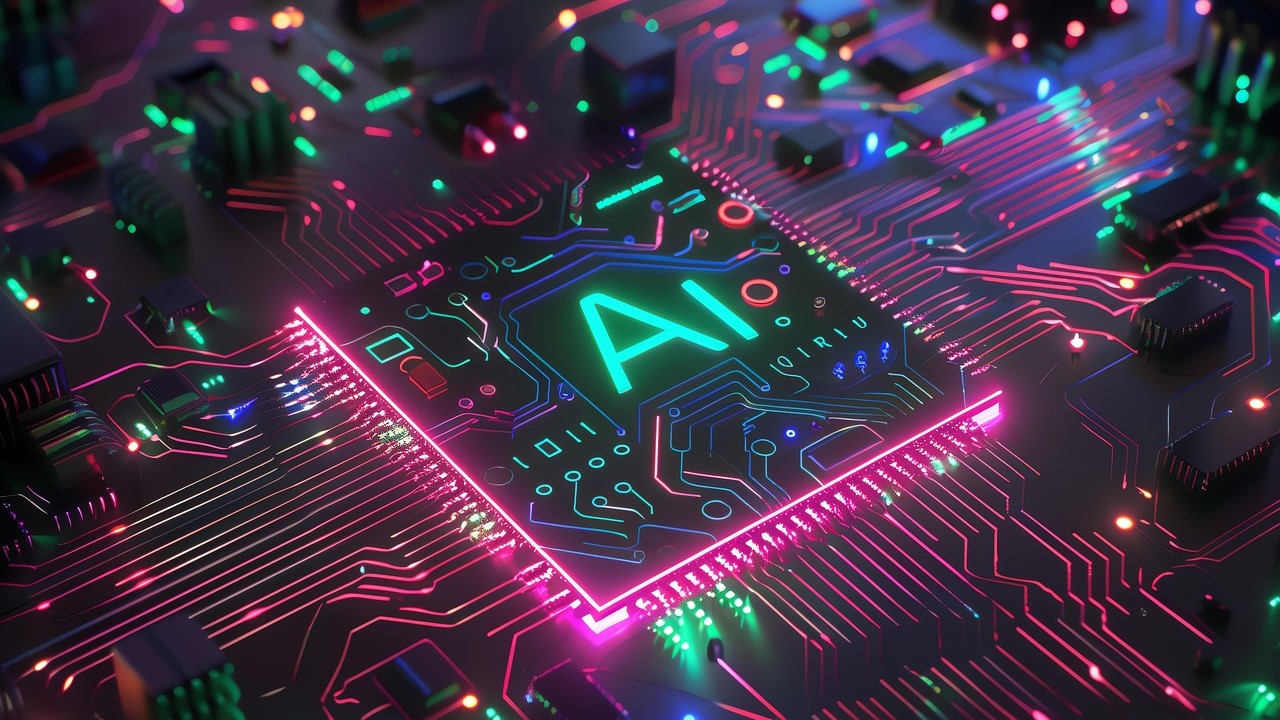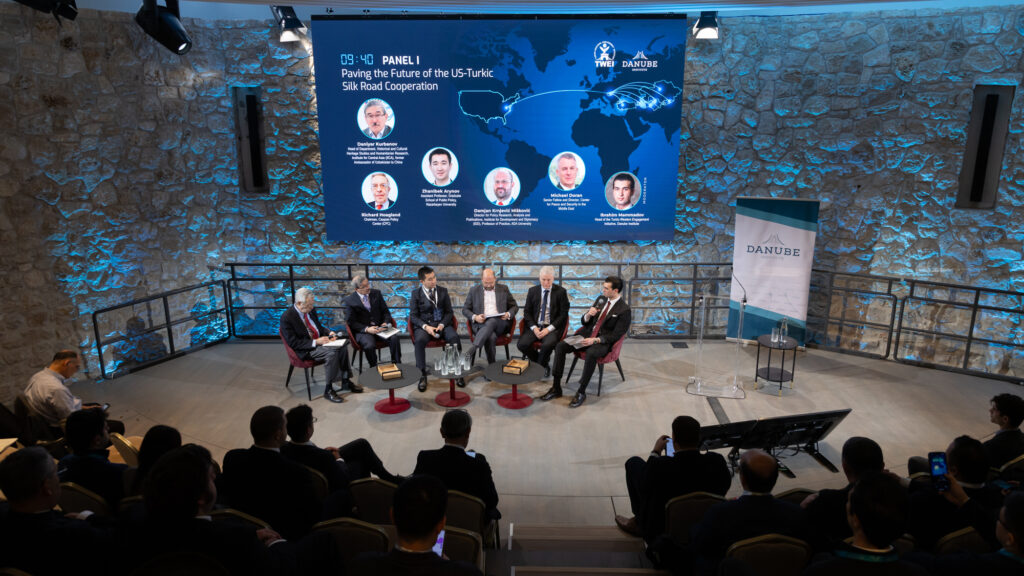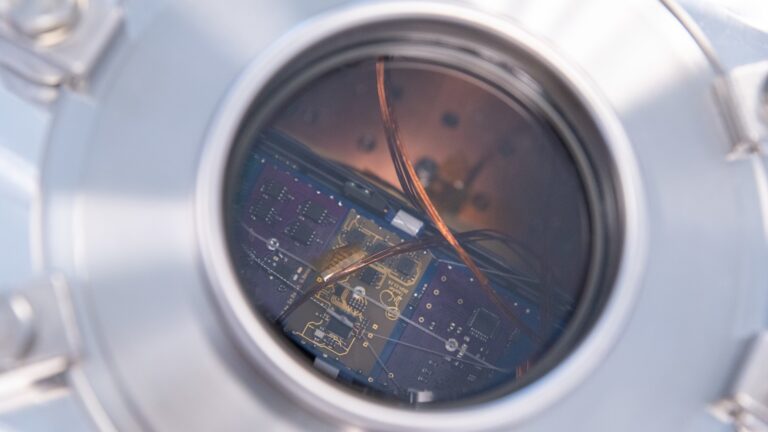The following is a translation of an article written by Viktória Lilla Pató, a research fellow at the Europe Strategy Institute of the University of Public Service, originally published on the Five Minutes Europe blog of Ludovika.hu.
The European Strategy for AI in Science has been published—but how does this feature in Hungary’s Artificial Intelligence Strategy (2025–2030)?
Artificial intelligence is the new driving force behind science, not only accelerating innovation but also fundamentally transforming scientific thinking and research and development methodologies. The European Commission’s communication on 7 October on the European Strategy for Artificial Intelligence in Science (COM(2025) 724 final) sets out the European framework for this paradigm shift. The strategy aims to make the European Union a global hub for AI-driven science, building on the principles of trustworthy AI. The new direction is the second pillar of the AI Continent Action Plan, which has been in force since spring and complements the Apply AI Strategy, which focuses on industrial and public service applications, by placing the AI transformation of the scientific sphere at the centre.
The flagship initiative of the strategy is RAISE, the Resource for AI Science in Europe, which acts as a virtual European institute coordinating the fundamental resources needed for AI-based science: excellence and talent, computing capacity, data, and research funding. RAISE has a dual purpose: to promote AI for science, that is, the development of AI technologies for scientific purposes, and AI in science, namely, the widespread use of AI in scientific research. The pilot phase of the initiative will start at the end of 2025 with €108 million in EU funding, as part of the AI in Science Summit in Copenhagen, financed by the Horizon Europe and Digital Europe programmes. In the longer term, through cooperation between Member States, researchers, and industrial partners operating in the European Research Area (ERA), RAISE could become the European centre for scientific artificial intelligence development, building on supercomputing infrastructure (EuroHPC, AI Factories, and AI Gigafactories) and a network of FAIR-compliant data platforms.
‘RAISE could become the European centre for scientific artificial intelligence development’
The main measures of the European Strategy for AI in Science focus on four areas. First of all, strengthening excellence and talent: the European Commission aims to attract world-class researchers and artificial intelligence experts to Europe and to retain those already working here. As part of this, €58 million will be allocated under the RAISE programme to create networks of excellence and doctoral training programmes for the training and collaboration of AI researchers and scientists. New doctoral and postdoctoral networks (RAISE Doctoral Networks) and thematic networks of excellence (Networks of Excellence) will be established, complemented by guidelines on ethical and research integrity (Living Guidelines on the Responsible Use of Generative AI in Research).
Secondly, there will be an expansion of computing capacities, for which €600 million will be provided from the Horizon Europe programme. This funding will support the development of supercomputing infrastructure for scientific purposes and provide researchers with access to AI Gigafactories, so that the most state-of-the-art computing resources will be available for European researchers and start-ups.
The third pillar is strengthening research funding: the Commission aims to double Horizon Europe’s annual investment in AI by 2028, exceeding €3 billion per year, with a particular focus on supporting scientific applications of AI.
Fourthly, the strategy highlights the improvement of access to research data, which includes the concept of Data Labs and the integration of research data repositories (eg, EOSC, European Health Data Space), in line with the upcoming Data Union Strategy. The aim is to make it easier for researchers to identify missing or critical data and to support them in collecting, organizing, and integrating it, thus ensuring the effective and reliable use of AI in science.
In addition to these, cooperation and coordination are also important, focusing on coordination between Member States at the European Research Area level, the establishment of the AI-in-Science Observatory, and the involvement of the private sector.
The EU strategy explicitly considers the use of ethical and human-centred artificial intelligence to be key to maintaining the social acceptance of science, as only 38 per cent of the population currently trusts AI-based scientific results. The goal is to make AI-driven science not only faster, but also more reliable and transparent.
‘The Commission’s goal is for all researchers to have the necessary knowledge and skills, thereby strengthening Europe’s scientific competitiveness’
The European Commission updated the European Competence Framework for Researchers (ResearchComp) on 13 October 2025, which serves to strengthen researchers’ preparedness. The new version includes a separate element that assesses the extent to which researchers can use artificial intelligence responsibly, consciously, and safely in their research work—from question formulation to data analysis and experimentation to the publication of results. The updated framework thus not only requires technological knowledge but also incorporates aspects of ethical research, transparency, and reliability into the training and daily practice of researchers. The application of the competency framework will help European universities and research institutions develop, based on common principles, the skills that are essential for the responsible scientific use of artificial intelligence. The Commission’s goal is for all researchers to have the necessary knowledge and skills, thereby strengthening Europe’s scientific competitiveness.
In parallel, in September 2025, Hungary updated its Artificial Intelligence Strategy (2025–2030), which is based on three pillars: artificial intelligence for economic and business transformation (AI4Business), the use of artificial intelligence for the development of society and public services (AI4Society), and the use of artificial intelligence for technological innovations (AI4Technology).
All of this shows that Hungary’s Artificial Intelligence Strategy does not treat scientific aspects as a separate ‘AI4Science’ pillar but deals with the scientific application of AI across several chapters—mainly as part of the data economy, education-research, and innovation ecosystem.
The overall goal of the Strategy is to support the country’s economic and social development by a data- and artificial intelligence-based ecosystem in which research and innovation play a central role. The document interprets AI not only as a technological tool, but also as a new engine for scientific performance, data use and knowledge sharing.
The scientific aspects of the strategy are organized around three main directions: (1) the development of AI research, (2) the strengthening of research infrastructures and data systems, and (3) the expansion of human resources and knowledge base.
First, the strategy emphasizes that Hungary intends to strengthen scientific research activities related to artificial intelligence in order to catch up with the international forefront. This includes supporting the transition between basic research, applied research, and industrial development, and the creation of research groups that can participate effectively in international cooperation and EU programmes (Horizon Europe, Digital Europe). The document stresses that the networked operation of research centres dealing with AI—universities, research institutes, corporate development centres—should be encouraged to create a unified, interconnected scientific ecosystem.
As a second pillar, the strategy identifies the strengthening of the data and computing infrastructure, without which scientific AI applications cannot be scaled. The goal is for Hungary to provide a research and development environment where high-performance computing (HPC) systems are available for models and analyses requiring artificial intelligence, as well as high-quality, securely accessible research data. The strategy also treats data-driven decision-making as a central element in research and development and advocates for open, yet ethical, data use. This includes regulated, transparent forms of data collection, sharing, and reuse, especially for the scientific community.
‘Artificial intelligence should not replace the human judgment of the researcher, but should act as a complementary tool to it’
As a third area, the strategy highlights the importance of education and research recruitment. According to the document, the successful application of artificial intelligence is unthinkable without well-trained professionals, data scientists, and researchers. To this end, the AI strategy envisages the renewal of higher education training, the expansion of research competencies, and targeted support for young talents. The government aims to build an independent AI research and development community that can form a bridge between science and the economy, contributing to international scientific circulation. The strategy also defines talent retention and the encouragement of researcher mobility as important tasks, recognizing that professionals in the field of artificial intelligence are in international competition.
The document pays special attention to the responsible and safe use of AI in science. Transparency, methodological reliability, and adherence to ethical principles are the main goals in research activities. The strategy also underlines that artificial intelligence should not replace the human judgment of the researcher, but should act as a complementary tool to it, increasing the accuracy and efficiency of research.
From a scientific perspective, the Strategy sets the goal of Hungary becoming a knowledge and research centre in which AI-based solutions become a natural part of discovery, analysis, and interpretation in all fields of science—from natural sciences to social sciences. After all, artificial intelligence is not only a key factor in industry, but also in scientific excellence and national innovation performance.
The common basis of the EU and Hungarian Strategies is that the future of science is not only a technological but also a value-based issue. AI is the new language of science, but it will only serve progress if it remains ethical, transparent, and human-centred.
Related articles:
Click here to read the original article.







